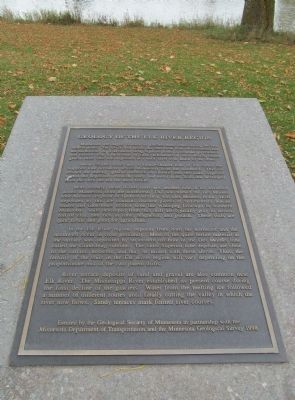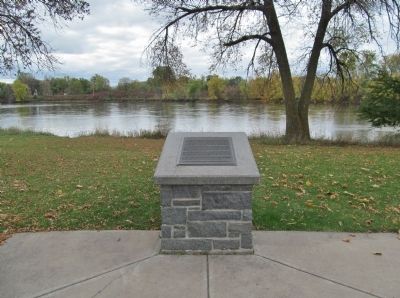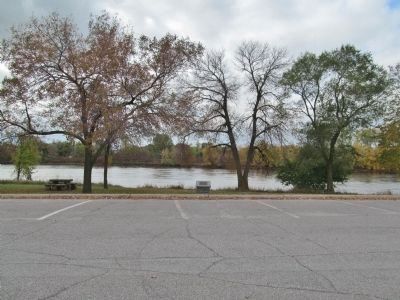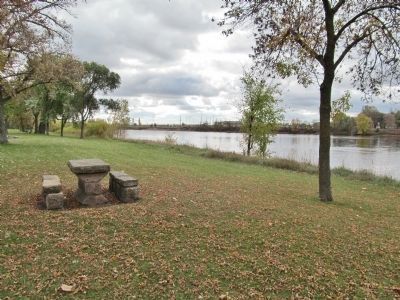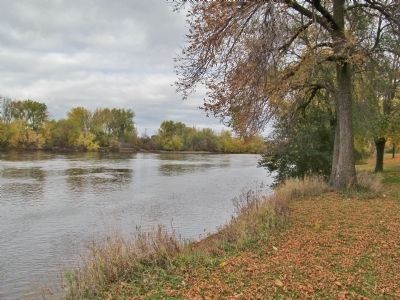Elk River in Sherburne County, Minnesota — The American Midwest (Upper Plains)
Geology of the Elk River Region
Minnesota was largely covered by glaciers many times during the last million years. The ice flowed across the state from both the northeast and the northwest. As it advanced along separate paths, it scraped up, crushed, and carried with it thousands of cubic kilometers of rock debris, called glacial drift. This was deposited in a thick layer over much of the state.
About 25,000 years ago, a tongue-shaped lobe of ice called the Superior lobe advanced across Minnesota from the northeast. This ice eroded the mostly igneous bedrock in Ontario and the Lake Superior region and deposited a reddish, sandy, and rocky drift. Soils that developed from this drift are not the most fertile.
More recently, about 16,000 years ago, another lobe of ice advanced across Minnesota from the northwest. This was named the Des Moines lobe because its point of furthest advance was Des Moines, Iowa. Drift deposited by this ice contains crushed pieces of sedimentary marine shales and limestone eroded from the Winnipeg Lowlands in southern Manitoba. Soils developed from this drift are typically gray to brown, full of clay, and rich in lime, magnesia, and potash. These soils are quite fertile and good for agriculture.
In the Elk River region, deposits from both the northeast and the northwest occur in close proximity. Most of the quite fertile material at the surface was deposited by an eastern offshoot of the Des Moines lobe called the Grantsburg sublobe. The older Superior lobe deposits are close to the surface, however, and may be mixed with those above. Thus, the fertility of the soils in the Elk River region will vary depending on the proportionate mix of the two parent drifts.
River terrace deposits of sand and gravel are also common near Elk River. The Mississippi River established its present course during the final decline of the glaciers. Water from the melting ice followed a number of different routes until finally cutting the valley in which the river now flows. Sandy terraces mark former river courses.
Minnesota Department of Transportation and the Minnesota Geological Survey 1998
Erected 1998 by the Geological Society of Minnesota in partnership with the Minnesota Department of Transportation and the Minnesota Geological Survey.
Topics and series. This historical marker is listed in this topic list: Natural Features. In addition, it is included in the Minnesota: Geological Society of Minnesota series list. A significant historical year for this entry is 1998.
Location. 45° 17.619′ N, 93° 33.567′ W. Marker is in Elk River, Minnesota, in Sherburne County. Marker can be reached from U.S. 10, 0.4 miles west of U.S. 169, on the left when traveling west. Marker is in Babcock Memorial Park. Touch for map. Marker is in this post office area: Elk River MN 55330, United States of America. Touch for directions.
Other nearby markers. At least 8 other markers are within 11 miles of this marker, measured as the crow flies. Grange Shrine (approx. 2.4 miles away); Itasca Village Townsite (approx. 4.2 miles away); Ice Age Souvenir (approx. 4.3 miles away); Aaron Greenwald (approx. 10.4 miles away); Washburn Saw Mill (approx. 10˝ miles away); Windego Park Auditorium (approx. 10˝ miles away); Rum River Dam (approx. 10˝ miles away); The Stone House (approx. 10˝ miles away).
Also see . . . Geology and Hydrology of Elk River Minnesota. (Submitted on November 4, 2013.)
Credits. This page was last revised on June 16, 2016. It was originally submitted on November 4, 2013, by Keith L of Wisconsin Rapids, Wisconsin. This page has been viewed 653 times since then and 28 times this year. Photos: 1, 2, 3, 4, 5. submitted on November 4, 2013, by Keith L of Wisconsin Rapids, Wisconsin.
